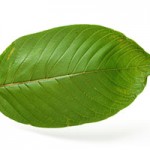 One of the most popular strains of kratom in cultivation, Rifat Kratom is a type of Thai Red Vein kratom originally bred by cloning wild trees. In fact, Rifat Kratom is one of the most highly prized of the cultivated varieties due to its high mitragynine content. We sell both the Rifat and Bumblebee Red Vein Kratom varieties as rooted cuttings for the aspiring exotic gardener. Many people find these particular strains to be the easiest and hardiest-growing types of kratom as well.
One of the most popular strains of kratom in cultivation, Rifat Kratom is a type of Thai Red Vein kratom originally bred by cloning wild trees. In fact, Rifat Kratom is one of the most highly prized of the cultivated varieties due to its high mitragynine content. We sell both the Rifat and Bumblebee Red Vein Kratom varieties as rooted cuttings for the aspiring exotic gardener. Many people find these particular strains to be the easiest and hardiest-growing types of kratom as well.
What does it mean when we say Rifat Kratom is a type of Red Vein? Kratom varieties come in several strains which are described by the color of the leaves’ central veins. Kratom leaves have central veins that can be green, white, or red to reddish purple. The different colors are thought to indicate a specific makeup of kratom’s major alkaloids—mitragynine, 7-hydroxymitragynine, and so on. Strains are further distinguished by origin: so you have Thai Red Vein, Malaysian Green Vein, Borneo White Vein, etc. Red Vein varieties are generally thought to have an alkaloid makeup that is more relaxing, while White Vein varieties are classed as energizing and Green Vein varieties are somewhere in between.
Rifat Kratom is a type of Thai Red Vein produced by cloning. It is named after Claude Rifat (Ree-FAH), a Swiss botanist who was the first to grow Rifat Kratom from seed as part of his research in Thailand. The parent plant is rumored to be the same one growing at Chulalongkorn University in Thailand whose leaves have been used in numerous research studies by Chiba University in Japan. Chiba University scientist Hitomitsu Takayama was among the first researchers to synthesize mitragynine in 1995.
As might be expected from the “Red Vein” label, mature Rifat Kratom plants have leaves with red or reddish purple central and lateral veins (veins running from the central stem down the leaf). However, if you get a plant labeled Rifat Kratom whose veins appear to be white or green as it’s maturing, don’t jump to the conclusion you’ve been ripped off! Factors in the growing environment can definitely affect the color of kratom’s leaves. Also, when kratom plants are reaching maturity, the levels of alkaloids and other chemicals in the leaf are changing. This means that the leaf color may change quite a bit before the kratom has fully matured. Frequently, Red Vein varieties have green or white veins when young, only deepening to red or purple at maturity.
If you’re thinking of purchasing a young kratom cutting or kratom seeds to grow yourself, we recommend getting a Rifat Kratom if you can. This hardy, fast-growing kratom variety has remained the most popular strain of kratom in private non-commercial cultivation, not only because of its mitragynine content, but also because it’s widely regarded to be easier to grow than other strains of kratom. This might be in part because Rifat Kratom is a clone: the Rifat strain was specially bred from wild kratom trees to select for genetic traits that made it more likely to thrive in cultivation. These traits combine to make Rifat Kratom a fairly forgiving and rewarding strain of kratom to try growing on your own, even for first-time kratom growers!

Best explanation I’ve seen of Rifat kratom. Great article.